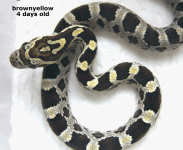slangenbroed
New member
6 years ago i bred amel to normal het amel result amel and normals one off the normals was different, brown with more yellow.
That anymal i held back ( female ) They said then it is a caramel and 2 years later i bred that animal to a amel het caramel , and now i happens.
Result amel , normals ,and amel but far more yellow and normal with more yellow but now caramel ore butters.
2 animals brownyellow and 2 anymals amelyellow , 1 male 3 female now in 2006 i put the last animals together.
Result amelyellow male x brownyellow female = normal, amel,amelyellow and brownyellow.
Result amelyellow male x amelyellow female = amel and amelyellow
In my opinion is this a dominant traid ?????????
For pics see www.slangenbroed.nl under the butten nieuw
That anymal i held back ( female ) They said then it is a caramel and 2 years later i bred that animal to a amel het caramel , and now i happens.
Result amel , normals ,and amel but far more yellow and normal with more yellow but now caramel ore butters.
2 animals brownyellow and 2 anymals amelyellow , 1 male 3 female now in 2006 i put the last animals together.
Result amelyellow male x brownyellow female = normal, amel,amelyellow and brownyellow.
Result amelyellow male x amelyellow female = amel and amelyellow
In my opinion is this a dominant traid ?????????
For pics see www.slangenbroed.nl under the butten nieuw


